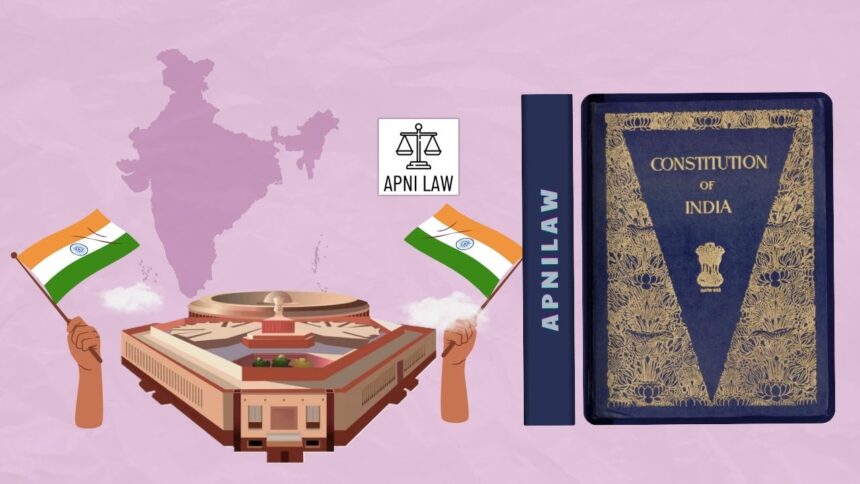Introduction
The Supreme Court of India has played a defining role in shaping the political and constitutional landscape of the nation. Over the decades, several landmark judgments have not only interpreted the Constitution but also expanded its meaning to protect democracy, liberty, and justice. These rulings have transformed Indian polity, reinforcing constitutional values while ensuring that power remains accountable to the people. From Kesavananda Bharati’s Basic Structure Doctrine to the Right to Privacy ruling, each case has deepened the spirit of constitutional democracy in India.
1. Kesavananda Bharati v. State of Kerala (1973)
This historic judgment established the Basic Structure Doctrine, the cornerstone of Indian constitutional law. The Court ruled that while Parliament has the power to amend the Constitution under Article 368, it cannot alter its basic structure. Concepts like the supremacy of the Constitution, separation of powers, judicial review, and secularism became protected principles. This decision struck a balance between parliamentary power and constitutional integrity, ensuring that democracy could not be undermined by amendments.
2. Indira Nehru Gandhi v. Raj Narain (1975)
In this case, the Supreme Court invalidated the election of Prime Minister Indira Gandhi on the ground of electoral malpractice. The judgment reaffirmed that even the highest office in the country is subject to judicial scrutiny. It strengthened the principle of equality before law and preserved the independence of the judiciary during one of India’s most politically turbulent periods.
3. Maneka Gandhi v. Union of India (1978)
This case revolutionized the interpretation of Article 21, which guarantees the right to life and personal liberty. The Court ruled that the “procedure established by law” must be fair, just, and reasonable. This expanded the scope of fundamental rights and made due process an essential part of Indian constitutional law, linking Articles 14, 19, and 21 as a “golden triangle” of individual freedom.
4. Minerva Mills v. Union of India (1980)
The Court in this case reaffirmed the Basic Structure Doctrine and struck down sections of the 42nd Amendment that gave Parliament unlimited power to amend the Constitution. The judgment emphasized harmony between Fundamental Rights and Directive Principles of State Policy, stating that neither could override the other.
5. Golaknath v. State of Punjab (1967)
Before Kesavananda Bharati, this case had already limited Parliament’s amending power. The Court held that Parliament could not amend fundamental rights, viewing them as sacrosanct. Although later modified by the 24th Amendment, Golaknath set the stage for the larger debate on the balance between rights and legislative power.
6. S.R. Bommai v. Union of India (1994)
This case defined the scope of Article 356, which allows the imposition of President’s Rule in states. The Supreme Court ruled that federalism is part of the basic structure of the Constitution and that the misuse of Article 356 could be judicially reviewed. The verdict preserved the autonomy of states and prevented the central government from arbitrarily dismissing state governments.
7. Manohar Lal Sharma v. Union of India (2014) — Coal Allocation Case
This ruling struck down arbitrary coal block allocations by the central government. The Court emphasized transparency and fairness in resource allocation, ruling that natural resources belong to the people. It reinforced the principle that government decisions must be guided by public interest, not political convenience.
8. I.R. Coelho v. State of Tamil Nadu (2007)
The judgment extended the Basic Structure Doctrine to laws placed under the Ninth Schedule of the Constitution. The Court ruled that even if a law is shielded from judicial review under the Ninth Schedule, it can still be struck down if it violates fundamental rights forming part of the basic structure.
9. Vishaka v. State of Rajasthan (1997)
In this case, the Supreme Court addressed the absence of legislation on workplace harassment and laid down the Vishaka Guidelines, ensuring the protection of women from sexual harassment at workplaces. The judgment became a milestone in advancing gender justice and was later codified through the Sexual Harassment of Women at Workplace Act, 2013.
10. Olga Tellis v. Bombay Municipal Corporation (1985)
The Court recognized the Right to Livelihood as an integral part of the Right to Life under Article 21. It ruled that eviction of pavement dwellers without alternative housing violated their fundamental rights. The judgment marked a shift toward socio-economic justice and human dignity.
11. Shreya Singhal v. Union of India (2015)
This judgment struck down Section 66A of the IT Act, which criminalized “offensive” online speech. The Court ruled that it violated Article 19(1)(a), the right to freedom of expression. The decision was hailed globally for upholding digital freedom and protecting citizens’ right to dissent in the digital age.
12. K.S. Puttaswamy v. Union of India (2017)
In a nine-judge bench decision, the Supreme Court declared the Right to Privacy as a fundamental right under Article 21. The judgment reshaped the relationship between citizens and the state, ensuring protection of personal data, autonomy, and dignity. It also set the stage for India’s future data protection framework.
13. Navtej Singh Johar v. Union of India (2018)
The Supreme Court decriminalized same-sex relationships by striking down parts of Section 377 of the Indian Penal Code. It affirmed that sexual orientation is a matter of identity and that equality and dignity extend to all citizens. The decision was a historic victory for LGBTQ+ rights and constitutional morality in India.
14. Joseph Shine v. Union of India (2018)
This case decriminalized adultery by declaring Section 497 of the IPC unconstitutional. The Court reasoned that treating women as property of men violated gender equality and personal liberty. The verdict marked another step toward gender-neutral laws and modernized India’s approach to personal rights.
15. Ayodhya Verdict (2019)
In this case, the Supreme Court settled one of India’s longest and most sensitive disputes. The Court awarded the disputed land to a trust for building a Ram Temple, while directing that an alternative five-acre plot be given to the Muslim community for constructing a mosque. The judgment balanced faith with constitutional justice and was hailed for maintaining peace and social harmony.
The Supreme Court’s Evolving Role
Each of these cases reflects the dynamic role of the Supreme Court as the guardian of the Constitution. Over the years, the judiciary has balanced individual rights with collective good, setting limits on legislative and executive powers. The Court’s willingness to adapt to contemporary issues, ranging from gender justice to digital rights, demonstrates its responsiveness to changing social realities.
The evolution of Indian polity owes much to judicial creativity and constitutional interpretation. By invoking doctrines like basic structure, constitutional morality, and transformative constitutionalism, the Supreme Court has ensured that democracy in India remains both resilient and progressive.
FAQs
1. Why is the Kesavananda Bharati Case considered the most important in Indian constitutional history?
It established the Basic Structure Doctrine, which prevents Parliament from altering the fundamental framework of the Constitution, preserving democracy and judicial independence.
2. How did the Vishaka judgment impact Indian workplaces?
It introduced legally binding guidelines to prevent sexual harassment at work, laying the foundation for later legislation like the 2013 Act.
3. What is the significance of the K.S. Puttaswamy Case?
It recognized the Right to Privacy as a fundamental right, expanding personal liberty and redefining the scope of Article 21 in the digital era.
Conclusion
The Supreme Court’s landmark judgments form the pillars of modern Indian democracy. From protecting fundamental rights to enforcing accountability, these cases have continuously redefined the balance of power between citizens and the state. Each decision underscores the vitality of the Constitution as a living document, flexible enough to evolve with time, yet firm enough to uphold justice.
As India continues to grow, the judiciary’s role remains crucial in preserving constitutional ideals and ensuring that liberty, equality, and dignity stay at the heart of governance. The journey from Kesavananda Bharati to the Right to Privacy case reflects not just legal evolution but also India’s democratic maturity.
For any specific query call at +91 – 8569843472








